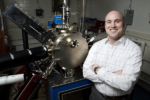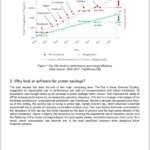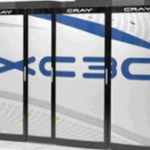Scientists at Lawrence Berkeley National Laboratory have turned a century-old material, barium titanate, into what the lab today said is “a next-gen, thin-film material that shows potential for achieving the memory storage properties necessary for developing low-power microelectronics.” “We’ve known about barium titanate for the better part of a century and we’ve known how to […]
HPC4EI to Release Spring Solicitation Funding Opportunity
April 12, 2022 — The U.S. Department of Energy’s High Performance Computing for Energy Innovation Initiative (HPC4EI) announced today it will issue a spring 2022 solicitation in May 2022. More information about this notice of intent are posted on SAM.gov. Selected projects will be awarded up to $300,000 to support computing cycles and work performed by DOE […]
Lenovo’s ‘Carbon-Negative’ Strategy for Customers Drives a Sustainable Energy Future
[Sponsored Content] The climate crisis – and, specifically, how to reduce greenhouse gas emissions generated by power-hungry data centers – was a top-of-mind issue at Lenovo’s recent Winterstock virtual event. The company has a lot to say on the issue in part because its strategy for addressing power usage has already cut greenhouse gas emissions […]
Technologies for Energy Efficient Supercomputing
In this special guest feature, Robert Roe from Scientific Computing World writes that it is not always clear which HPC technology provides the most energy-efficient solution for a given application. “You need to understand your application as somebody that is coming into this from a greenfield perspective. If your application doesn’t parallelize well, or if it needs higher frequency processors, then the best thing you can do is pick the right processor and the right number of them so you are not wasting power on CPU cycles that are not being used.”
Energy Efficiency in the Software Stack — Cross Community Efforts
This report covers events at SC17 that focused on energy efficiency and highlights ongoing collaborations across the community to develop advanced software technologies for system energy and power management.
SC17 Panel: Energy Efficiency Gains From Software
In this video from SC17 in Denver, Dan Reed moderates a panel discussion on HPC Software for Energy Efficiency. “This panel will explore what HPC software capabilities were most helpful over the past years in improving HPC system energy efficiency? It will then look forward; asking in what layers of the software stack should a priority be put on introducing energy-awareness; e.g., runtime, scheduling, applications? What is needed moving forward? Who is responsible for that forward momentum?”
Energy Efficient Supercomputing
While large scale supercomputing centers continue to push the boundaries of the ability to process numerical information, either HPC like or Big Data like, a concern is the ability for the datacenter to power and cool such large installations. The new Cray XC Supercomputer is an energy efficient advancement to the traditional cluster.
World’s Most Energy Efficient Supercomputer Powered by AMD FirePro™
AMD powers the L-CSC cluster at the GSI research facility which achieved the number one position for most energy efficient supercomputers on the latest Green500™ List. The L-CSC cluster is installed at the GSI Helmholtzzentrum für Schwerionenforschung GmbH research facility in Darmstadt, Germany, and is powered by AMD FirePro™ S9150 server GPUs.










